Integration of sites and social networks: ergonomic aspects
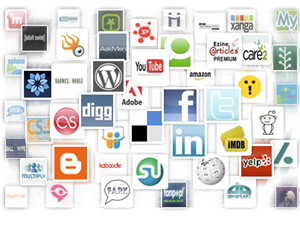 From the translator . The widespread use of social networking capabilities is one of the characteristic trends in the development of the Internet today. Social networks have long ceased to be a simple tribute to fashion and is used as an effective means of communication in various fields: journalism, politics, commerce, show business ... A modern website not only provides some information, but also creates a space for communication. Website developers are faced with an important task: to make working with social communication tools really convenient and enjoyable. Publishing in this post a translation of an article from the French blog Usaddict, we would like to start a discussion about the ergonomic aspects of various social tools. We hope that not only experts in the field of usability and website design will take part in it, but also those who use social networks as a tool in their daily work: journalists, marketers, social media professionals.
From the translator . The widespread use of social networking capabilities is one of the characteristic trends in the development of the Internet today. Social networks have long ceased to be a simple tribute to fashion and is used as an effective means of communication in various fields: journalism, politics, commerce, show business ... A modern website not only provides some information, but also creates a space for communication. Website developers are faced with an important task: to make working with social communication tools really convenient and enjoyable. Publishing in this post a translation of an article from the French blog Usaddict, we would like to start a discussion about the ergonomic aspects of various social tools. We hope that not only experts in the field of usability and website design will take part in it, but also those who use social networks as a tool in their daily work: journalists, marketers, social media professionals.Website owners are increasingly resorting to integrating them with social networks. This practice poses new challenges for web developers and designers. The main task is to ensure that the site owner is known and recognizable in the information field with the help of additional tools. Ease of use, integration and adaptation - these are the three whales on which all work with social media stands. In this article, the problem of integrating the site with social networks will be considered in terms of ergonomics and design.
Dissemination of information through social networks
')
In the electronic versions of periodicals and blogs, the "Share" function has become widespread (i.e., disseminate information in social networks). Recently, a similar opportunity is provided on a wide variety of sites. The goal is clear: to disseminate information in wide circles, to attract the attention of users to it, to get an opportunity to directly contact with the audience.
On the GDF Suez website, access to social media integration is almost imperceptible. To indicate this function, a low-key icon is used. However, this icon is located next to the title of the publication, as is usually done on the sites of press publications. But in order to be used for its intended purpose, the element must be visible and recognizable.

The pharmaceutical company GlaxoSmithKline on its website uses a module based on the set of social buttons AddThis:

A similar model is used on the website of the German concern BASF, but the set of social buttons is not located at the top, but at the bottom of the screen (under the text of the article).
The website of the bank Crédit Agricole uses a set of social buttons ShareThis:
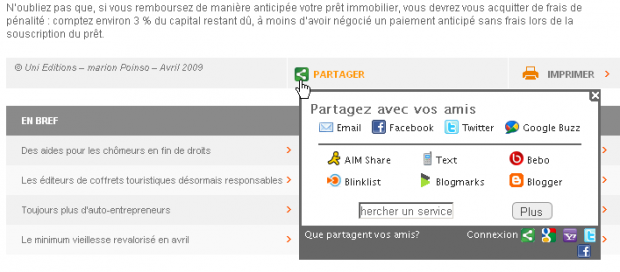
The design of the retail network Zara is executed in a minimalist style. Here there is only one social button (Facebook), but the site is not overloaded with excessive visual elements:

Recommendations :
- Social buttons should be visible and attract the user's attention;
- Icons are better placed at the top of the page, under the heading of the text;
- When using third-party components, it is necessary to translate them into their native language /
Attracting users to corporate accounts Facebook, Twitter, Youtube
Today, there are links to Facebook, Youtube, Twitter, Flickr, etc. on many official sites. With these links, you can quickly post information in social media, but you can also confuse the user.
Diesel places links to corporate accounts at the bottom of a web page; Links are designed exclusively in the form of logos of the respective services:

Ford provides more detailed information on its US website, explaining that it also has accounts on various social services, including Scribd (an online document-hosting service) and Delicious (a service for publishing bookmarks to web pages):
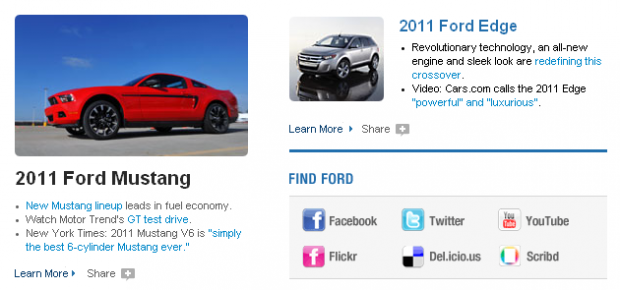
DoMyJeans has placed on the home page of the site tools for accessing accounts on Facebook, Twitter and the corporate blog:
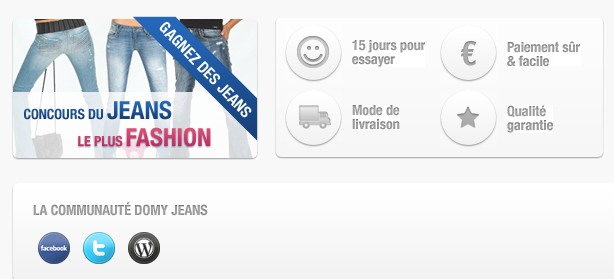
Provide social communication
Some companies place so-called social plugins on their websites. Thanks to them, site visitors can see what is being published on company accounts in social services and add the company to the list of friends in social networks.
WholeFood's website has special pages that display all messages on Facebook and Twitter accounts:

Like Button (Facebook)
Many site owners use the “Like” button. By clicking on this button, visitors can go to the Facebook site holders page and see how many people have used this feature before.
The American network of cafe Outback Steakhouse at the bottom of the main page of its official website has posted a counter indicating that its products like 700,000 Facebook users:

Recommendations
- Use the "Like" button if the site is intended for a wide user audience.
- It is advisable to put a counter on the site that registers the number of clicks on the “Like” button.
Login to the site through social networks
Today, access to many sites does not require registration and entry procedures in the traditional sense (especially since many users find them time consuming and taking a fair amount of time): they log in through existing accounts in popular social networks.
Diigo (a bookmarking service for web pages) invites users to log in via Facebook, Twitter, as well as Google and Yahoo accounts. Just click on the corresponding icon and the form for entering the login and password will appear on the screen.
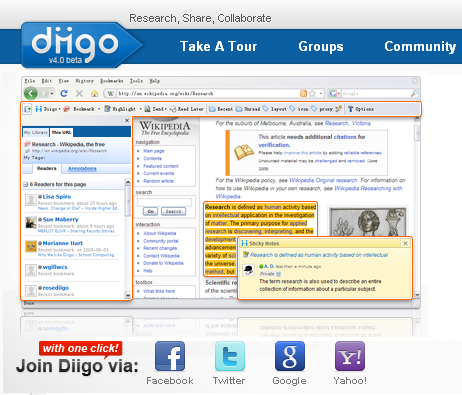
Recommendations
- Logging in through social networking accounts should serve to speed up access to site services. It is necessary to make such an input as quickly as possible.
- It is preferable to place the tools to log in via social networks at the top of the main page.
Ease of commenting
The openness of the site to the general public these days implies the possibility of commenting on materials. Organizing commenting is a serious matter; often, it involves the participation of a person professionally engaged in communication with the user community (English Community manager).
BNP Paribas Bank was one of the first French companies to establish communication with customers through comments:
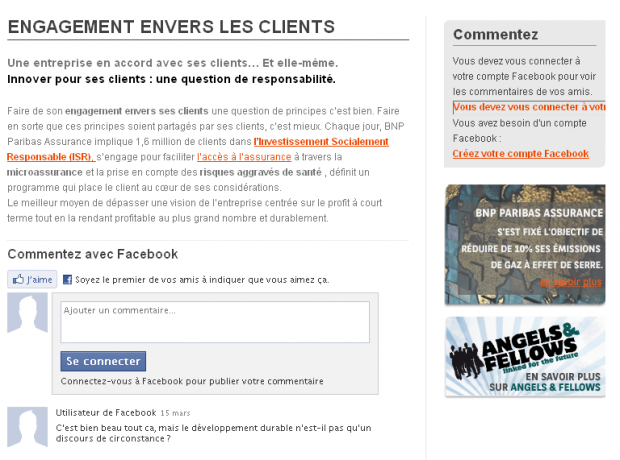
The network of perfumery and cosmetic stores Sephora offers visitors of its site to express their opinion about the goods they purchase:

Recommendations
- If the services (goods) offered on the site are aimed at a wide user audience, it seems appropriate to provide the possibility of feedback through comments.
- It is desirable that the organization of communication with users involved in a specialist to work with social media.
- Freedom of expression should be limited to a certain framework: an excess of spam and comments “off topic” can significantly impair the image of the site.
At first, many site owners feared that the influx of users from social networks was a negative rather than a positive trend and did not use social integration tools. However, it later became clear that social networks have a number of indisputable advantages - if, of course, they are used correctly.
From practical recommendations we can give the following. The so-called social buttons should be located already on the main page of the site. In addition, an important tool is the ability to log into the site through Facebook and Twitter accounts. Finally, comments with the possibility of evaluation and voting, if they are well organized and properly moderated, can be an excellent means to increase the level of trust between the site owners and its audience.
Source: https://habr.com/ru/post/122617/
All Articles